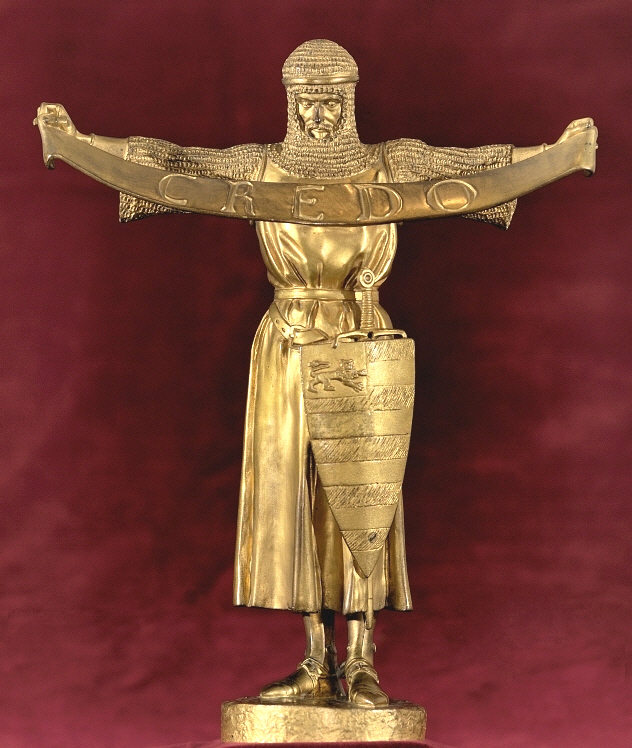|
Chapter VI Passion of Christ, Passion of the Church
1. Credo in unam sanctam, catholicam et apostolicam Ecclesiam
|
|
|
“How many are living in union with the Church at this tragic moment as tragic as the Passion; at this crucial moment in history, when mankind is opting for Christ or against Christ?”
Credo in unam, sanctam, catholicam et apostolicam Ecclesiam. These words of the Creed are certainly those that most deeply resounded in the heart of Plinio Corrêa de Oliveira, during the century in which he lived. He himself recalls how his love for the Church and the Papacy always inspired his struggle in defence of Christian civilization and how it progressively increased from his distant childhood. “I still recall the catechism lessons in which the Papacy was explained to me, its divine institution, its powers, its mission. My heart of a child (I was about nine years old) was filled with admiration, with rapture, with enthusiasm: I had found the ideal to which I would dedicate my whole life. From then to now, my love for this ideal has only grown. And I pray to Our Lady that she ever increase it in me, until my dying breath. I desire that the last act of my intellect may be an act of faith in the Papacy; that my last act of love may be an act of love for the Papacy. Thus, in fact, I would die in the peace of the elect, well united to Mary my Mother, and through her to Jesus, my God, my King and my excellent Redeemer.” (1) It is difficult to understand the profound meaning of these words in an age characterized by a general coldness and indifference towards ecclesiastical institutions. They were written at the beginning of the 70s, at a time when the crisis of the Church seemed to reach its climax. In the Appendix to Revolution and Counter-Revolution, the author noted how in 1959, when his work first appeared, the Church was still considered a great spiritual power against the expansion of the Communist world. In the following years, the decisive centre of the struggle between the Revolution and the Counter-Revolution moved from temporal society to inside spiritual society. “The Holy Church” wrote Plinio Corrêa de Oliveira after the Council “is now this centre. In her, progressivists, crypto-communists, and pro-communists confront anti-progressivists and anti-communists.” (2) To those who asked him why fight the errors pervading the faithful, when there were so many others outside the Catholic ranks, Plinio Corrêa de Oliveira replied from as early as the 50s: “If the enemy is storming the walls, everyone must unite. But if it has penetrated the citadel, then it is not enough to fight outside the walls, but also within the walls”.(3)
Notes: (1) P. CORRÊA DE OLIVEIRA, A perfeita alegria, Folha de S. Paulo, 12 July 1970, It. tr. in Il crepuscolo artificiale del Cile cattolico, (Piacenza. Cristianita, 1973), p. 21. (2) P. CORRÊA DE OLIVEIRA, Revolution and Counter-Revolution, p. 151. (3) Plínio CORRÊA DE OLIVEIRA, “Razões e contra-razões em torno de um tema efervescente", Catolicismo, no. 71, November 1956; ID., “Indulgentes para com o erro, severos para com a Igreja”, Catolicismo, no. 72, December 1956; ID., “Não trabalha pela concórdia senão quem luta contra o erro”, Catolicismo, no. 73, January 1957; Cunha Alvarenga (=José de Azevedo Santos), “Infiltrações comunistas em ambientes católicos”, Catolicismo, no. 61, January 1956. Along the same lines are three articles on modernism, that appeared in numbers 81, 82, 83 (Sept.-Oct.-Nov. 1957) with the titles “ O cinquantenário da Pascendi;Por orgulho repelem toda sujeição and Revivem nos modernistas o espírito e os métodos do Jansenismo". |
|



